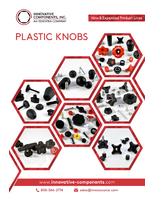High-Speed CMOS Cameras withstand extreme environments.
Press Release Summary:

Measuring 73 x 73 x 72 mm and built to withstand 170 G shock/17 grms vibration, Phantom® Miro® C-Series is suited for on-board automotive crash testing. Units feature 12-bit, ½ in. CMOS sensor that captures images at max speed of 2,000 fps at full 1280 x 1024 resolution. To protect images if cable is severed during experiment, cameras have internal battery and internal, non-removable CineFlash® memory. Other features include HD-SDI output, continuous recording, and auto-exposure.
Original Press Release:
Vision Research Debuts New Phantom® Miro® C-Series at Automotive Testing Expo North America 2014
Rugged Miro® C-Series Designed Specifically for Use in the Most Extreme Environments
WAYNE, N.J., – Vision Research, a leading manufacturer of digital high-speed imaging systems, today announced the introduction of the new Phantom® Miro® C-Series at Automotive Testing Expo North America 2014. Boasting a compact cube design (73mm x 73mm x 72mm) and built to withstand shocks of 170G and vibration of 17 grms, the Miro C-Series high-speed cameras are ideal for any number of extreme environments, such as on-board automotive crash testing.
Comprising two models, the Phantom Miro C210J and C210, the Miro C-Series features a 12 bit, ½ inch CMOS sensor that's capable of capturing images at a maximum speed of 2,000 frames per second (fps) at full 1280 x 1024 resolution. With standard mounting holes strategically integrated into the camera bodies, the Miro C210J and C210 can be securely fastened and safely positioned for precise image capture no matter how challenging the location may be.
Moreover, each camera has features to protect the images if a cable is severed during an experiment. The cameras have an internal battery and internal, non-removable Phantom CineFlash® memory, and can immediately store images to the CineFlash. Should AC power be interrupted, the internal battery offers up to 30 minutes of backup power allowing the camera to store images to the local memory.
"Digital high-speed video is one of the most valuable tools that today's automotive test engineers have at their disposal," said Rick Robinson, Director of Marketing for Vision Research. "To be able to offer image quality and performance of this level in a form factor so rugged and compact truly separates the Miro C-Series from the competition. No matter how demanding the application or how harsh the environment, these cameras offer the ideal feature set and drastically enhance the critical analysis of high-speed motion."
Key Specifications of the Phantom Miro C-Series:
--Â 12-bit 1.3 Megapixel CMOS sensor
--Â 2,000 fps @ 1280 x 1024
--Â ISO Monochrome 5,000 (T), 2,500 (D)
--Â Color 640 (T), 640 (D), adjustable
--Â Compact, rugged design
--Â Hi-G: 170G, IAW MIL-STD 810G,
--Â 17Grms, IAW MIL-STD-202G
--Â Reversible mount for C & CS lenses
--Â Internal battery to protect data
--Â Phantom RCU compatible
--Â HD-SDI output
--Â Internal CineFlash
--Â Continuous Recording
--Â Auto-Exposure
--Â Multi-cine Acquisition
--Â Gb Ethernet
--Â Weight: 1.0 lb / 0.5 kg
--Â Size: 2.9 x 2.9 x 2.8 inches / 73 x 73 x 72 mm (W x H x D)
-- Operating Temperature: 0º C to 35º C / 32º F to 95º F
The difference between the Miro C210 and C210J are the connectors. The Phantom Miro C210 has connectors that are compatible with other Phantom Miro cameras for power and control, allowing it to operate as a stand-alone camera for a variety of scientific and industrial applications. The Miro C210J is designed to operate through a single cable to Vision Research's new Miro Junction Box (JBox).
The JBox is a flexible hub designed to not only help operate the camera but to create almost any multi-camera configuration imaginable. Each JBox can accept up to six cameras, each of which is connected using just a single cable. Other Phantom Miro cameras as well as the Miro C210 can connect to the Miro JBox, offering users significant configuration flexibility.
To view video from the Phantom Miro C-Series high-speed cameras, click here.
To find out the latest on Vision Research and its high-speed cameras, follow on Twitter at @PhantomHiSpeed, LinkedIn at Vision Research, Facebook at "visionresearch" or keep up to date with the innovations on the Vision Research blog at www.visionresearch.com/blog.
About Vision Research
Vision Research is a leading manufacturer of high-speed digital imaging systems that are indispensable across a wide variety of applications, including defense, automotive, engineering, science, medical research, industrial manufacturing, packaging, sports broadcast, TV production and digital cinematography.
The Wayne, N.J.-based company designs and manufactures the most comprehensive range of digital high-speed cameras available today, all of which deliver unsurpassed light-sensitivity, image resolution, acquisition speed and image quality.
Over the course of its 60+ year history, Vision Research has earned numerous awards in recognition of its innovations in high-speed digital camera technology and sensor design, including a technical Emmy and an Academy Award®.
Vision Research digital high-speed cameras add a new dimension to the sense of sight, allowing the user to see details of an event when it's too fast to see, and too important not to™. For additional information regarding Vision Research, please visit www.visionresearch.com.
Vision Research is a business unit of the Materials Analysis Division of AMETEK Inc., a leading global manufacturer of electronic instruments and electromechanical devices.
Video - http://youtu.be/Iw0uVkU04x0
Web Site: http://www.visionresearch.com




